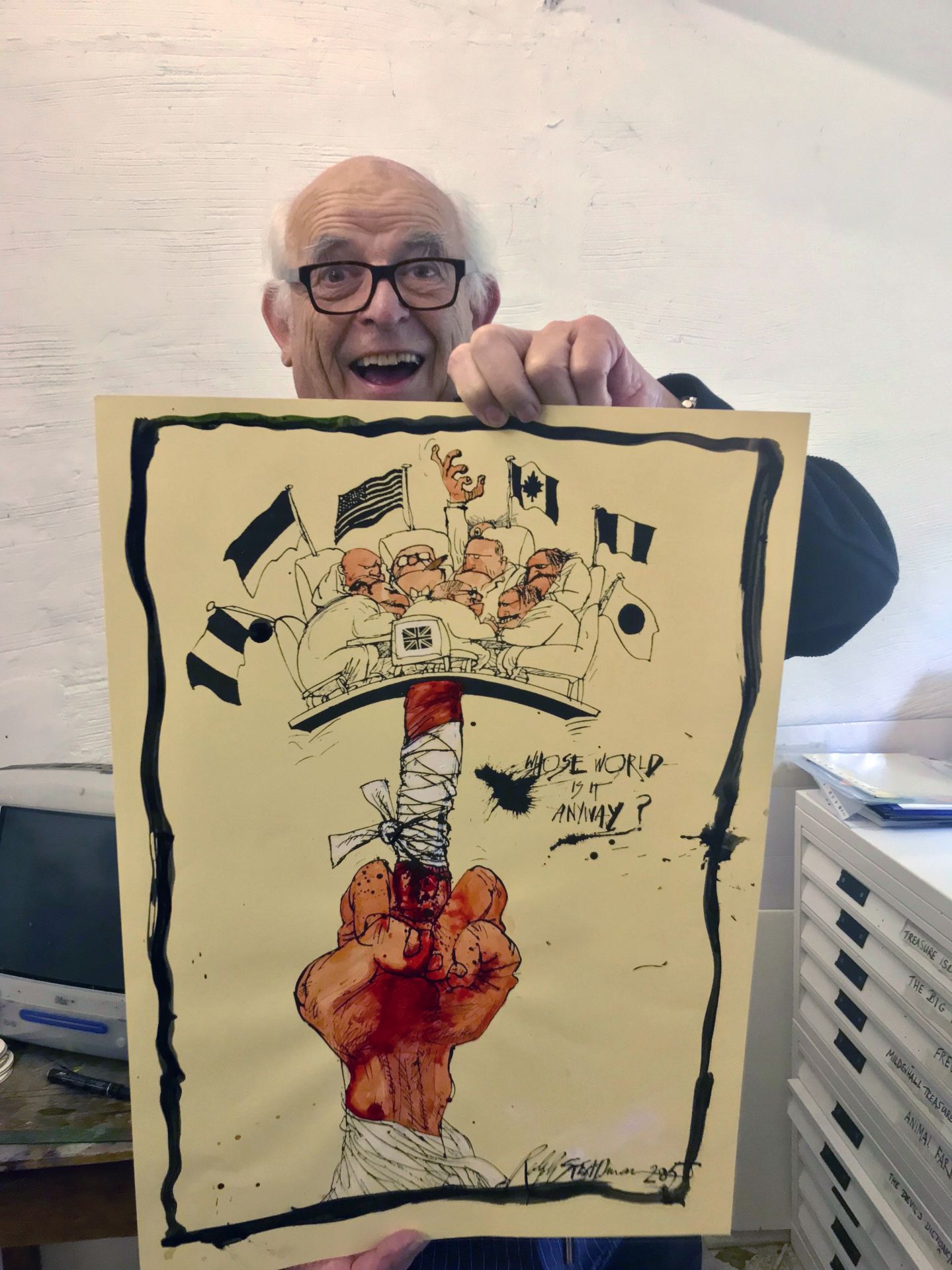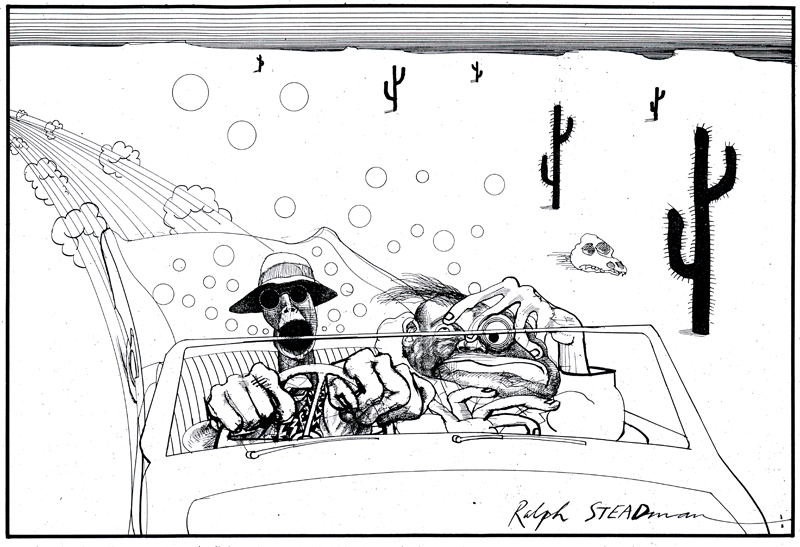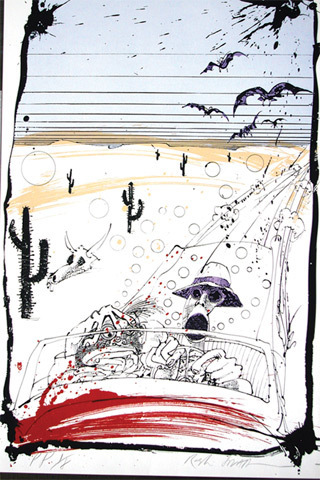

He hated people complaining about their age. “And then,” he says, “sometimes wonderful things happen.” Adds Steadman, “My father said the only thing he noticed about growing old was that the undertaker started raising his hat to him. Then he flicks his wrist, making a splat on a piece of cartridge paper, like a fly hitting a windshield. Most mornings, he’s up early at his home in the English countryside, has a coffee and a cigarette, and dips a paintbrush into black India ink. Like his hero Picasso, Steadman maintains a near-religious work ethic - he’s currently working on his second book of extinct bird cartoons. “He said, Ralph, I’d feel trapped if I didn’t know I could commit suicide at any moment.” (The result: Steadman wound up on a rowboat with two spray cans, trying to write “Fuck the Pope” on the side of a yacht.) But though Thompson “could be an absolute son of a bitch” according to Steadman, the two stayed in touch until the writer’s death in 2005. Steadman only took drugs once, when Thompson gave him psilocybin after dragging him to the American’s Cup in Rhode Island.
#Fear and loathing in las vegas art ralph steadman professional#
Reader’s Poll: The 10 Best Johnny Depp Moviesĭespite their professional relationship, Steadman and Thompson were opposites in many ways.

His comments on money and race were too often ignored while everyone was busy making money.” Wenner and Johnny Depp, who spends a day with Steadman preparing to shoot The Rum Diary, based on Thompson’s first novel. (It opens in New York on April 25th.) The film features interviews with friends like Rolling Stone founder Jann S. You’ll see a lot of Steadman’s inner imp in the new documentary For No Good Reason, an ambitious profile of the Fear and Loathing artist shot over 15 years by director Charlie Paul. “He had a devil in him, and it excited the devil in me.” “He so enjoyed the idea of this geek coming from England you know, being so innocent and getting involved in anything that he sort of dangled in front of me,” says Steadman, 77. “I started to have growing awareness that anything was up for grabs, the crazier the better,” says Steadman, and the artist’s twisted, alcohol-fueled images complemented the demented prose perfectly. He went on to produce some of the weirdest, funniest and most disturbing art of the 20th century in the pages of Rolling Stone, full of unflinching political and social commentary – from portraying Nixon as a decaying corpse in a 1973 RS cover to a politically doomed McGovern being circled by alligators. Some months later, Thompson sent Steadman the manuscript for Fear and Loathing in Las Vegas, a chronicle of countercultural misadventures and madness that follows Thompson and his frog-like attorney speeding through the desert to Sin City in an ether-and-amyls haze. “Steadman was lucky to get out of Louisville without serious injuries, and I was lucky to get out at all.”

“The rest of that day blurs into madness,” the scribe in question - one Hunter S. He was paired with a writer that his editor said once worked with the Hells Angels.

for the first time to cover the Kentucky Derby for a small periodical. Ralph Steadman was an underground London cartoonist in 1970 when he flew to the U.S.


 0 kommentar(er)
0 kommentar(er)
